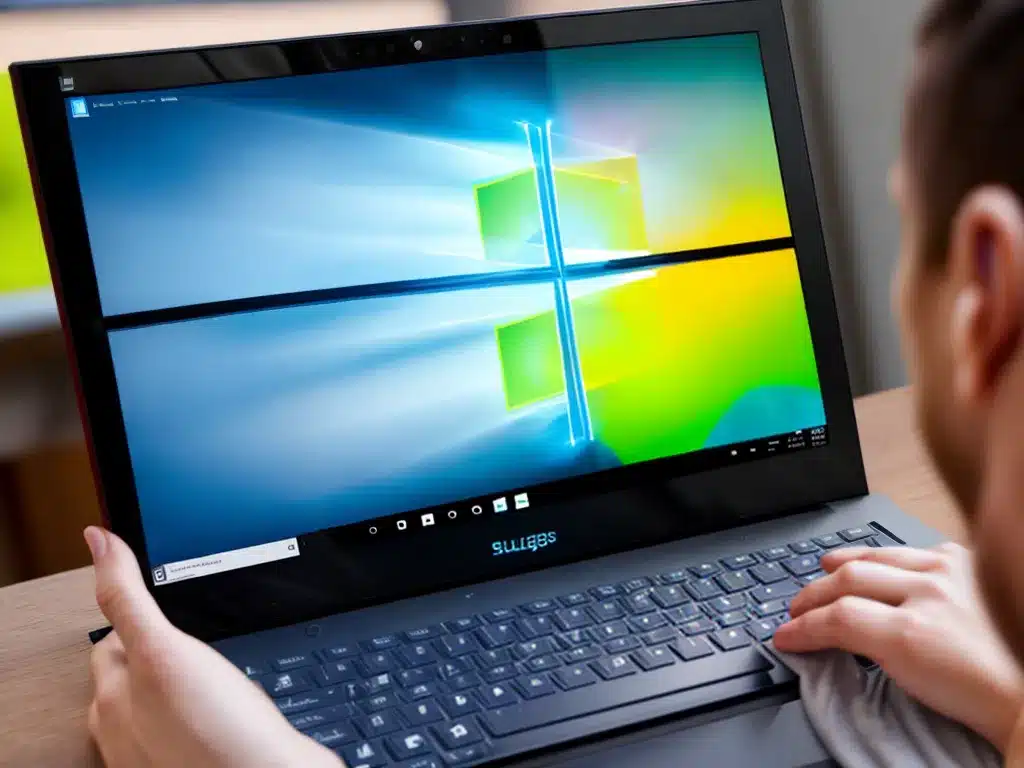
A slow, sluggish computer can be incredibly frustrating. As a Windows 10 user, there are many steps you can take to speed up my computer and improve its overall performance. With some simple software adjustments, cleaning, and hardware upgrades, I can make my Windows 10 PC run faster.
Diagnose the Issue
Before attempting to speed up my Windows 10 computer, it helps to diagnose why it became slow in the first place. Here are some common culprits for sluggish performance:
Too Many Startup Programs
Having too many programs launch at startup can overload my computer’s memory and CPU usage, slowing things down. I should review my startup items in Task Manager and disable any unnecessary programs.
Low Disk Space
If my main C drive is low on disk space, my computer has to work harder to save files and access data. Keeping at least 20% of my C drive free can prevent slowdowns.
Malware and Viruses
Malicious software running in the background drags down performance. Running a full antivirus scan helps detect and remove anything suspicious.
Too Many Browser Tabs Open
Leaving dozens of browser tabs open bogs down memory usage. Regularly closing unused tabs speeds up web browsing.
Outdated Drivers
Using outdated and broken drivers can cripple performance. I should keep my graphics card, motherboard, and other critical drivers updated.
Hardware Failures
Failing hard drives or RAM chips lead to sluggish behavior and crashes. Monitoring my hardware health and replacing aging components helps.
Clean Up and Remove Bloatware
After diagnosing the problem areas, I can take steps to clean and optimize my Windows 10 computer. Here is how:
Uninstall Unused Programs
I should uninstall programs I no longer need. Having too many unused apps runs in the background negatively impacts performance. I can remove bloatware that came pre-installed on my machine as well.
Clean Out Files
Using the Disk Cleanup utility cleans out system files and temporary folders. I should also delete any large files I no longer need and clear my Recycle Bin. This frees up valuable disk space.
Disable Visual Effects
Disabling fancy visual effects like animations in the Performance Options speeds things up. These effects look nice but drain system resources. I may also want to stop background apps from running.
Update Windows and Drivers
Making sure I have the latest Windows Updates and device driver versions improves performance and fixes bugs. I can check for updates in Windows Update and visit manufacturer websites.
Run Maintenance Utilities
Utilities like CCleaner and Defraggler optimize my system. CCleaner cleans the registry and removes junk while Defraggler defrags my hard drive for faster file access.
Check Task Manager
Task Manager shows me which processes and services are using up CPU, memory, and disk. I can end unnecessary background tasks and processes hampering performance here.
Upgrade Hardware
For large performance gains, I may need to upgrade my Windows 10 computer’s hardware:
Upgrade RAM
Adding more RAM allows my computer to multitask and run demanding programs. 8GB is recommended for most users, while 16GB provides headroom. Upgrading to a faster RAM speed also helps.
Add an SSD
Replacing an old hard drive with a solid state drive (SSD) dramatically speeds up boot times and file operations. Because SSDs have no moving parts, they are much faster than traditional hard drives.
Use a Faster CPU
For better multitasking and faster rendering, I can upgrade my processor. A modern, multi-core processor gives a nice boost. I need to match my motherboard socket when choosing a new CPU.
Get a Discrete GPU
Installing a dedicated NVIDIA or AMD graphics card improves gaming performance and video editing. For less demanding tasks, integrated graphics are usually sufficient. Graphics card prices are inflated right now however.
Perform a Clean Install
If my computer came preloaded with bloatware, performing a clean install of Windows 10 resets everything. I should backup important data first. Reinstalling Windows clears out junk and provides a fresh slate.
With some targeted troubleshooting, cleaning, and a few hardware upgrades, I can restore speed and responsiveness to even the most sluggish Windows 10 machine. My computer will run like new again.












